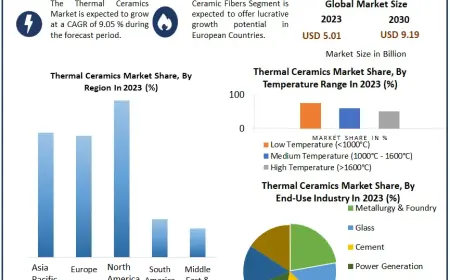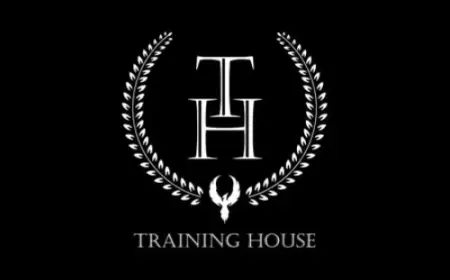Importance of Tracking Your Fitness Progress: Personal Trainer’s Guide

Achieving fitness goals requires dedication, consistency, and a well-structured plan. However, tracking progress is one of the most overlooked aspects of a successful fitness journey. Whether you are working towards weight loss, muscle gain, or improving endurance, monitoring your progress can be a game-changer. As a personal trainer, understanding the importance of tracking fitness progress helps keep clients motivated, make informed adjustments, and ensure long-term success.
Why is Tracking Fitness Progress Necessary?
Provides a Clear Picture of Progress
One of the primary reasons for tracking fitness progress is to gain a clear understanding of how far you've come. It’s easy to feel discouraged when changes aren’t immediately visible. However, when progress is documented, you can see small, incremental improvements in weight, strength, endurance, and overall fitness levels.
Helps Set Realistic Goals
Setting realistic fitness goals is key to success. By tracking progress, fitness trainer Dubai can help clients establish achievable short-term and long-term goals based on their current fitness levels. This prevents frustration and promotes a positive mindset towards fitness.
Boosts Motivation and Accountability
When clients see tangible results—whether it’s weight loss, increased strength, or improved stamina—they stay motivated to continue their fitness journey. Progress tracking also promotes accountability as clients become more committed to their workouts, nutrition, and overall lifestyle choices.
Identifies What Works and What Doesn’t
Not all workout routines and diet plans work the same for everyone. By tracking progress, personal trainers can assess what’s working and make necessary adjustments. If a specific training regimen isn’t yielding results, modifications can be made to optimize effectiveness.
Prevents Plateaus
Fitness plateaus can be frustrating. Regularly tracking progress helps identify when a client is hitting a plateau, allowing trainers to implement changes such as increasing intensity, altering routines, or adjusting nutrition to keep progress on track.
Methods for Tracking Fitness Progress
Keeping a Workout Journal
A fitness journal is one of the simplest yet most effective ways to track progress. Clients can record details about their workouts, including exercises performed, sets, reps, and weights used. Over time, this log provides valuable insights into strength gains and endurance improvements.
Taking Body Measurements
The scale doesn’t always tell the full story. Tracking body measurements, such as waist, hips, arms, and thighs, provides a better understanding of body composition changes. This is especially useful for individuals focusing on fat loss and muscle gain.
Progress Photos
Photographic evidence is a powerful tool. Taking progress photos every few weeks allows clients to visually see the transformation their body is undergoing. It’s often easier to notice changes in pictures than in the mirror.
Tracking Strength and Endurance Gains
For those focused on performance, tracking strength and endurance improvements is crucial. This can be done by monitoring personal records (PRs) in lifting, timing runs, or assessing improvements in functional movements such as push-ups, squats, and planks.
Using Fitness Apps and Wearables
Technology has made progress tracking easier than ever. Wearable devices and fitness apps can monitor steps, heart rate, calories burned, and even sleep patterns. These tools provide data-driven insights that help optimize training and lifestyle choices.
Monitoring Nutrition
Diet plays a major role in fitness progress. Tracking daily food intake through apps or food journals helps clients stay mindful of their nutrition and ensure they are meeting their dietary goals.
Tips for Effective Progress Tracking
Be Consistent
Tracking should be done consistently to provide accurate insights. Whether it’s weighing in weekly, taking photos monthly, or logging workouts daily, consistency is key to seeing trends over time.
Focus on More Than Just Weight
The number on the scale is just one metric. Emphasizing other factors such as strength, endurance, energy levels, and body composition provides a more comprehensive picture of progress.
Celebrate Small Wins
Recognizing small achievements keeps motivation high. Whether it’s lifting heavier weights, running a faster mile, or simply feeling more energetic, celebrating milestones boosts confidence and commitment.
Stay Patient and Trust the Process
Fitness progress takes time. Encouraging clients to trust the process and stay consistent will help them avoid frustration and remain dedicated to their goals.
Seek Professional Guidance
Working with a personal trainer ensures that progress tracking is done correctly and effectively. Trainers can provide expert advice, monitor improvements, and adjust programs to maximize results.
Final thoughts
Tracking fitness progress is an essential part of any successful training plan. It provides clarity, motivation, and direction, helping individuals stay committed to their goals. By incorporating various tracking methods, personal trainers can optimize workout plans, prevent plateaus, and guide clients toward long-term success. Whether through journals, measurements, photos, or technology, consistent progress tracking is the key to achieving and maintaining fitness goals.
For a personal trainer in Dubai, helping clients track their progress also builds stronger trainer-client relationships. When clients see that their efforts are paying off, they develop trust and confidence in their trainer’s expertise. This, in turn, fosters client retention and long-term success in the fitness industry.
Ultimately, tracking progress isn’t just about numbers—it’s about celebrating the journey, recognizing improvements, and continually pushing towards a healthier, stronger version of oneself. By making tracking an integral part of a fitness program, both trainers and clients can enjoy a more structured, rewarding, and successful fitness journey.
What's Your Reaction?
 Like
0
Like
0
 Dislike
0
Dislike
0
 Love
0
Love
0
 Funny
0
Funny
0
 Angry
0
Angry
0
 Sad
0
Sad
0
 Wow
0
Wow
0
















































